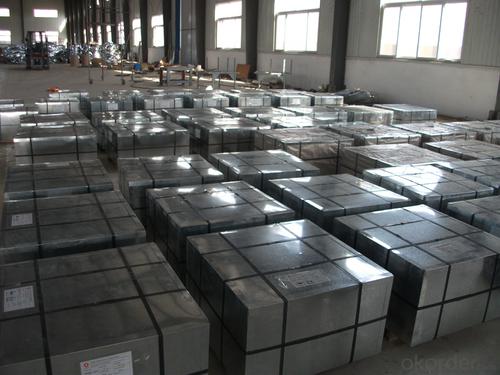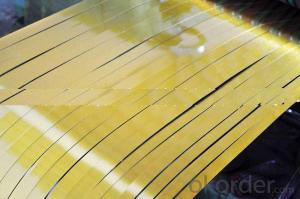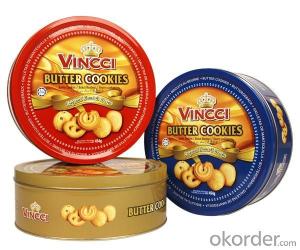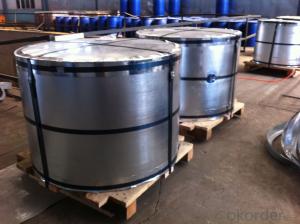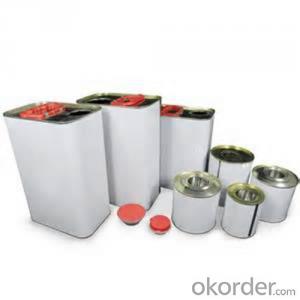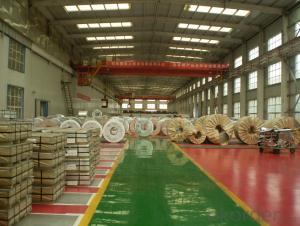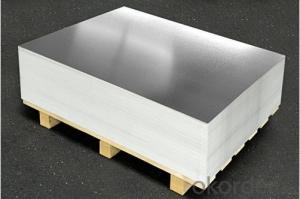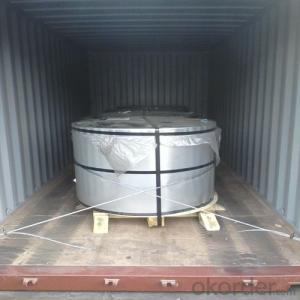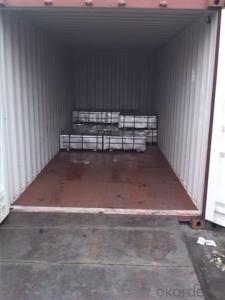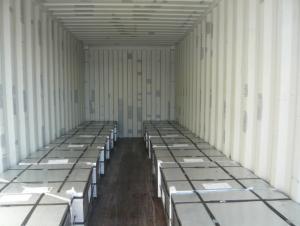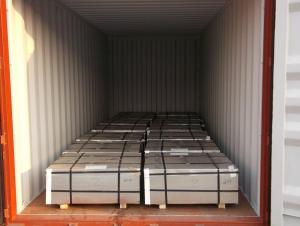ETP for Metal Package of Industrial or Chemical Useage
- Loading Port:
- Shanghai
- Payment Terms:
- TT OR LC
- Min Order Qty:
- 25 m.t.
- Supply Capability:
- 30000 m.t./month
OKorder Service Pledge
OKorder Financial Service
You Might Also Like
Specification
1.Structure of ETP for Metal Package of Industrial or Chemical Useage Description
Electrolytic Tinplate undoubtedly enjoys the pride of place as a packaging medium especially for food. It owes its unique position to its "nine layer sandwich structure", each of which contributes to its eminence as a packing material. The steel base of electrolytic tinplate provides the necessary strength and formability for can fabrication. The tin-iron alloy layer provides the bond between the steel and free tin layer. The free tin layer is not only responsible for the attractive bright finish and ease of solderability but is also non-toxic- a factor of vital importance in food packaging!
2.Main Features of the ETP for Metal Package of Industrial or Chemical Useage
Tinplate’s corrosion resistance, light weight and malleability make it ideal for many precision end uses, including food packaging and consumer products. The special properties of tinplate and improved manufacturing technology is allowing for the utilization of tinplate in many new end products.
3.ETP for Metal Package of Industrial or Chemical Useage Images
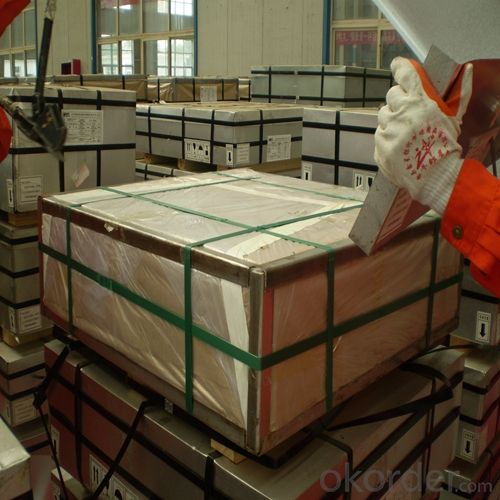
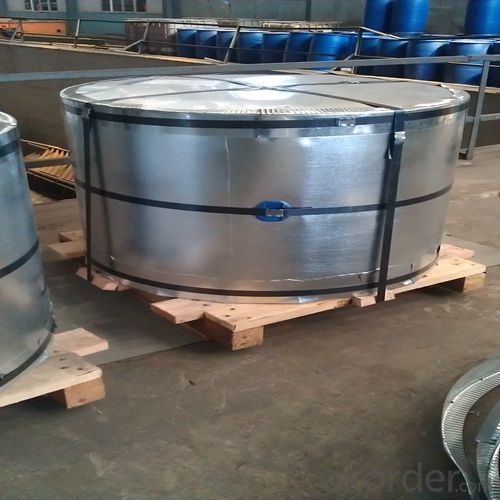
4.ETP for Metal Package of Industrial or Chemical Useage Specification
Specification of :
Standard: ISO 11949 -1995, GB/T2520-2000,JIS G3303,ASTM A623, BS EN 10202
Material: MR,SPCC
Thickness:0.15mm - 0.50mm
Width: 600mm -1150mm
Temper: T1-T5
Annealing: BA & CA
Coil Inner Diameter: 508mm
Weight: 6-10 tons/coil 1~1.7 tons/sheets bundle
Passivation:311
Oil: DOS
Surface: Finish,bright,stone,matte,silver
5.FAQ of ETP for Metal Package of Industrial or Chemical Useage
- What is tinning and how does it work?
Tinning is the process of thinly coating sheets of wrought iron or steel with tin, and the resulting product is known as tinplate. It is most often used to prevent rust.
- Do you only have prime quality tinplate?
We can supply both prime and second quality tinplate.
- Q: How does tinplate handle exposure to UV radiation?
- Tinplate does not handle exposure to UV radiation well, as it is prone to degradation and oxidation when exposed to sunlight for prolonged periods.
- Q: How does tinplate perform in terms of gas barrier properties?
- Tinplate generally provides excellent gas barrier properties, as the tin coating on the steel substrate acts as a protective layer that prevents the penetration of gases. This makes tinplate a suitable choice for packaging perishable goods and sensitive products that require a longer shelf life.
- Q: What are the different methods of recycling tinplate packaging?
- The different methods of recycling tinplate packaging include sorting, cleaning, shredding, melting, and reprocessing. Sorting involves separating tinplate packaging from other materials. Cleaning removes any contaminants from the tinplate. Shredding breaks down the tinplate into smaller pieces. Melting helps to separate the tin coating from the steel base. Finally, reprocessing involves transforming the separated tin and steel into new products or materials.
- Q: What is the tensile strength of tinplate?
- The tensile strength of tinplate typically ranges from 30,000 to 50,000 pounds per square inch (psi).
- Q: How does tinplate compare to other packaging materials in terms of sustainability?
- Tinplate is generally considered to be a sustainable packaging material compared to other alternatives. It is highly recyclable and has a low carbon footprint compared to materials like plastic. Additionally, tinplate containers can be reused multiple times, reducing waste generation. However, it is important to consider factors like transportation costs and energy consumption during the production process, which may vary depending on the specific context.
- Q: What are the main challenges in tinplate coating thickness control?
- One of the main challenges in tinplate coating thickness control is achieving uniformity across the entire surface of the tinplate. The coating thickness must be consistent and within the desired range to ensure proper protection and functionality of the tinplate. Additionally, controlling the coating thickness requires precise measurement and monitoring techniques as well as the ability to adjust the coating process parameters in real-time to account for any variations or deviations. Another challenge is ensuring the adhesion of the coating to the tinplate surface, as poor adhesion can lead to coating defects and reduced performance. Lastly, controlling the coating thickness while maintaining cost-effectiveness can be a challenge, as it requires optimizing the coating process to minimize material waste and reduce production costs.
- Q: What is the purpose of tin coating on tinplate?
- The purpose of tin coating on tinplate is to provide a protective barrier against corrosion, as tin is highly resistant to oxidation. Additionally, the tin coating enhances the appearance of the tinplate and allows for easy soldering, making it suitable for various applications such as food packaging and decorative items.
- Q: What are the main factors affecting tinplate coil surface quality?
- The main factors affecting tinplate coil surface quality include the cleanliness of the steel substrate, the quality of the tin coating, the level of oil or grease residues, and the presence of any defects or imperfections on the surface. Additionally, factors such as the processing conditions during manufacturing, handling and storage practices, and the environment in which the tinplate is exposed can also impact the surface quality.
- Q: How does tinplate perform in extreme temperatures?
- Tinplate generally performs well in extreme temperatures due to its high melting point and thermal conductivity. It remains stable and retains its structural integrity, making it suitable for various applications in both hot and cold environments.
- Q: How is tinplate tested for quality control?
- Tinplate is tested for quality control through various methods including visual inspection, measurement of coating thickness, adhesion testing, and corrosion resistance testing.
Send your message to us
ETP for Metal Package of Industrial or Chemical Useage
- Loading Port:
- Shanghai
- Payment Terms:
- TT OR LC
- Min Order Qty:
- 25 m.t.
- Supply Capability:
- 30000 m.t./month
OKorder Service Pledge
OKorder Financial Service
Similar products
Hot products
Hot Searches
Related keywords



